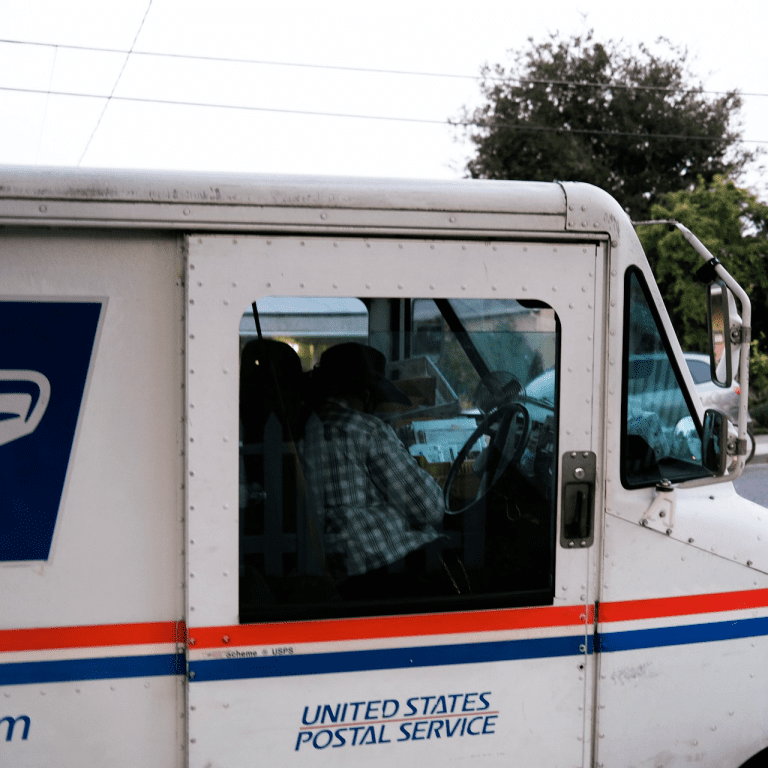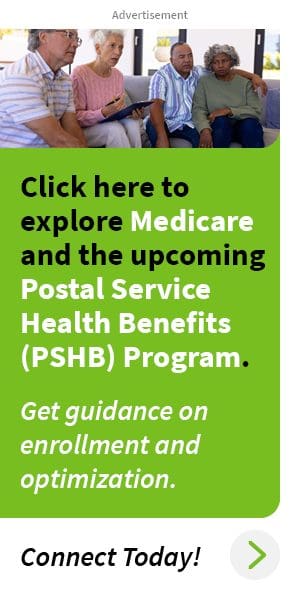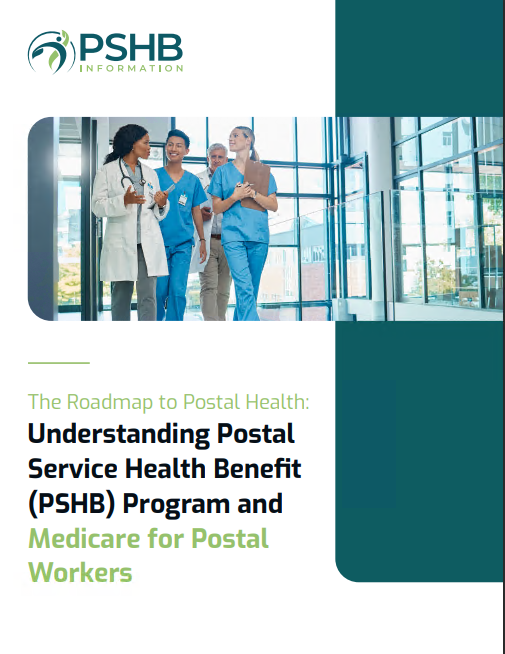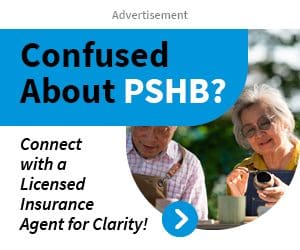Key Takeaways:
-
The new Postal Service Health Benefits (PSHB) system introduces tailored health coverage for USPS employees and retirees, aligning with Medicare for enhanced benefits.
-
Understanding eligibility, enrollment, and benefits under the PSHB program ensures you make the most of the system in 2025.
Navigating the Transition to PSHB in 2025
The Postal Service Health Benefits (PSHB) program marks a significant shift in how health benefits work for USPS employees, retirees, and their families. This transition, effective January 1, 2025, replaces the previous Federal Employees Health Benefits (FEHB) program for postal workers. If you’re part of the USPS family, here’s what you need to know about this evolution and how it impacts your health coverage.
What Makes PSHB Different?
PSHB is specifically designed to meet the unique needs of USPS employees and retirees. Unlike the FEHB program, PSHB plans are exclusive to postal workers, ensuring tailored coverage. Here are some key differences:
-
Customized Options: PSHB plans provide coverage tailored to USPS workforce requirements, including benefits aligned with Medicare.
-
Medicare Integration: Eligible retirees are required to enroll in Medicare Part B, which works alongside PSHB for comprehensive coverage.
-
Cost Management: The program includes benefits like premium reimbursements and lower out-of-pocket costs for Medicare enrollees, offering financial relief.
Eligibility for PSHB Plans
Eligibility for PSHB coverage depends on your role and Medicare status. Here’s a breakdown:
-
USPS Employees: Active employees are automatically eligible for PSHB during the Open Season or qualifying life events (QLEs).
-
USPS Retirees: Retirees must transition from FEHB to PSHB unless covered under a family member’s non-postal FEHB plan.
-
Medicare-Eligible Members: Retirees and family members aged 65 or older must enroll in Medicare Part B to maintain PSHB coverage, with some exceptions for those retired on or before January 1, 2025.
Enrollment: What You Need to Know
Open Season Dates
The PSHB Open Season is the designated period for enrolling or making changes to your health plan. For 2025, Open Season ran from November 11 to December 13, 2024, allowing ample time to review and select a plan that meets your needs.
Automatic Enrollment
If you were enrolled in an FEHB plan as of 2024, you’re automatically transitioned to a corresponding PSHB plan. However, it’s still a good idea to review your options to ensure your coverage aligns with your healthcare needs.
Qualifying Life Events (QLEs)
Outside of Open Season, changes to your PSHB plan are limited to QLEs, such as marriage, birth of a child, or changes in employment status. It’s crucial to report these events promptly to adjust your coverage.
Medicare and PSHB: A Seamless Partnership
For retirees and family members aged 65 or older, Medicare Part B enrollment is a cornerstone of PSHB coverage. Here’s how the partnership works:
-
Coordination of Benefits: Medicare becomes your primary insurance, with PSHB acting as secondary coverage. This reduces out-of-pocket costs and ensures comprehensive healthcare access.
-
Pharmacy Benefits: PSHB plans automatically include Medicare Part D prescription drug coverage through an Employer Group Waiver Plan (EGWP), simplifying medication access and cost management.
-
Financial Incentives: Many PSHB plans offer reimbursements for Medicare Part B premiums, helping offset the additional cost of Medicare enrollment.
Additionally, by streamlining the integration between Medicare and PSHB, the system aims to reduce redundant coverage and unnecessary administrative complexities, which benefits both providers and beneficiaries alike.
Key Benefits of the PSHB Program
1. Comprehensive Coverage
PSHB plans cover a wide range of healthcare services, including preventive care, hospital stays, prescription drugs, and specialist visits. Integration with Medicare further enhances these benefits for eligible retirees.
Comprehensive coverage ensures that beneficiaries have access to essential healthcare without worrying about gaps that may arise from disjointed insurance plans. This includes options for expanded preventive services and improved access to diagnostic and therapeutic care.
2. Cost Savings
By coordinating with Medicare, PSHB plans help reduce overall healthcare costs. Premium reimbursements, waived deductibles, and lower out-of-pocket expenses are just a few examples of how the program supports financial wellness.
These cost-saving measures allow beneficiaries to better manage their budgets while maintaining high-quality healthcare. Over time, these financial benefits contribute to greater peace of mind and long-term stability for USPS families.
3. Simplified Administration
With automatic enrollment in PSHB and seamless integration with Medicare, managing your health benefits is more straightforward than ever. USPS employees and retirees can focus on their health rather than navigating complex insurance systems.
Simplified processes reduce the burden on beneficiaries to handle claims and appeals, ensuring that healthcare remains the primary focus rather than paperwork and administrative hurdles.
Key Deadlines and Details for 2025
Staying informed about important deadlines ensures you make the most of your PSHB coverage. Here’s a quick overview:
-
January 1, 2025: The PSHB program officially replaces FEHB for USPS employees and retirees.
-
December 13, 2024: Last day of the Open Season to enroll or make changes for the 2025 plan year.
-
Throughout 2025: Monitor communications for updates on coverage, benefits, and any mid-year changes that may apply.
In addition to these dates, beneficiaries should stay proactive by checking for plan updates and communication from their HR department to stay on top of any new developments or adjustments that may arise.
How to Choose the Right PSHB Plan
Assess Your Healthcare Needs
Consider factors such as:
-
Frequency of doctor visits.
-
Prescription medication requirements.
-
Potential specialist care or hospital stays.
Evaluate whether your current plan addresses these needs effectively or if switching to a different PSHB plan would provide better coverage.
Compare Plans
Use online resources provided by the PSHB program to compare plan options, costs, and benefits. Look for plans that balance coverage with affordability.
Taking time to understand plan tiers, covered services, and associated costs ensures that you’re making an informed decision that best meets your healthcare needs.
Evaluate Medicare Coordination
If you’re Medicare-eligible, prioritize plans that offer strong coordination benefits, such as premium reimbursements and reduced deductibles. These features maximize the value of your Medicare enrollment and ensure comprehensive protection.
What If You’re Not Medicare-Eligible?
For USPS employees and family members under age 65, PSHB plans still offer robust coverage. Preventive care, emergency services, and prescription drug benefits are available without requiring Medicare enrollment.
This inclusivity ensures that all USPS employees and family members, regardless of age, can benefit from PSHB coverage. Plans are designed to cater to a diverse range of health needs and circumstances.
FAQs About PSHB
Will I Lose Coverage If I Don’t Enroll in Medicare Part B?
Yes, Medicare-eligible retirees and family members must enroll in Part B to maintain PSHB coverage unless exempt. Failure to enroll may result in a loss of coverage.
Can I Keep My Current FEHB Plan?
Only if you’re covered under a family member’s non-postal FEHB plan. Otherwise, you must transition to PSHB.
Are Vision and Dental Benefits Included?
Many PSHB plans include vision and dental benefits. Review plan details to confirm specific offerings.
Additionally, staying proactive by reading plan documents and reaching out to your plan’s customer service can help clarify any uncertainties about specific benefits.
Your Next Steps
To ensure a smooth transition to PSHB, here’s what you should do:
-
Review your current health plan and identify any gaps or areas for improvement.
-
Compare PSHB plans to find the best fit for your needs.
-
Enroll during Open Season or report any QLEs promptly to update your coverage.
-
Monitor plan updates regularly to ensure continued satisfaction with your coverage.
Make the Most of Your PSHB Coverage
As the USPS health benefits landscape evolves in 2025, staying informed and proactive ensures you maximize the advantages of the PSHB program. From Medicare integration to tailored plans, the new system is designed to meet the unique needs of postal employees and retirees. Take the time to understand your options, enroll in the right plan, and enjoy the peace of mind that comes with comprehensive health coverage.
Remember, proactive engagement with your health benefits is key to making the most of this transition. Whether you’re a retiree navigating Medicare coordination or an active employee exploring coverage options, the PSHB program is structured to support your healthcare journey.










